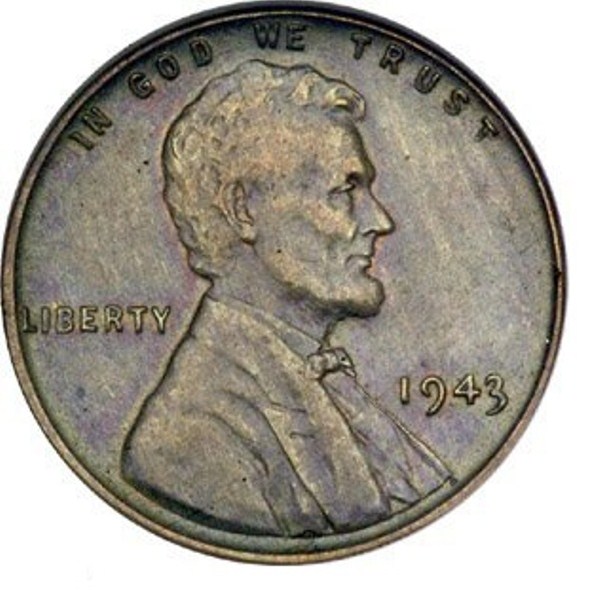![1943_copper_cent[1]](https://mysteriouswritings.com/wp-content/uploads/2013/05/1943_copper_cent1-300x296.jpg) A person never knows when a treasured cent could be tossed into their hands. Taking a closer look at your everyday pocket change could result in a penny saved being worth more than the penny earned. Two of the dates to lookout for are 1943 and 1944. If either of these years is noticed, it may be worth more than your two cents in searching.
A person never knows when a treasured cent could be tossed into their hands. Taking a closer look at your everyday pocket change could result in a penny saved being worth more than the penny earned. Two of the dates to lookout for are 1943 and 1944. If either of these years is noticed, it may be worth more than your two cents in searching.
In 1943, the demand for copper during the war caused the United States to replace the one cent coin, made from copper, to pennies made from zinc-coated steel. The 1943 steel penny was only issued by the U.S. Mint for one year, though. Problems had occurred with the cent’s steel composition which resulted in the Treasury Department to return back to the standard bronze planchets for mintage of the penny in 1944.
These changeovers created a few very valuable error coins. Although there were not any official 1943 copper pennies issued by the U.S. Mint, it has been confirmed that a few copper penny planchets were indeed struck. These 1943 copper pennies (instead of steel) are worth well above their mere one cent marking. They have sold at auctions and have fetched prices in the thousands, and even into the hundreds of thousands of dollars, depending on their condition.
Additionally, it has also been realized that the same error of striking the wrong planchets happened in 1944. Discovering a 1944 steel penny, instead of a 1944 copper penny, would be the rare and exciting find for this year. For example, in 2008 a 1944 steel penny minted from San Francisco was auctioned off for a price reaching $373,750. The condition of the steel penny was said to be “coolly brilliant”.
Because the 1943 steel penny was a first issue coin, many of them were collected and saved in people’s collections. An unknown 1943 error coin (the copper penny) may be part of these stashes. Over time, some of these coins make their way into circulation. The discovery of a rare 1943 copper penny in pocket change is certainly not impossible.
One of the first ways to determine if you have discovered a 1943 copper penny is to look at its appearance, and determine if it is magnetic or not. A 1943 steel cent’s composition displays a silvery shine once worn and is magnetic. A mistaken 1943 copper planchet would not include these characteristics.
However, because of the high value for 1943 copper pennies, a person needs to also take a discerning look at the date. Attempts have been made to pass a 1948 copper cent off for a 1943 copper cent by altering the number 8 into a 3. An easy way to determine a genuine 1943 coin from a 1948 altered coin is by the tail of the number 3. The tail of the 3 will be longer and go slightly below the 4 in an authentic 1943 copper penny; the altered 8 (3) remains even with the 4.
If your 1943 cent is magnetic, then it is probably a 1943 steel penny. This would still be worth keeping. Circulated, well worn, 1943 steel pennies are worth more than one cent. Depending on the exact condition, they may range from a few cents up to around 50 cents. An uncirculated coin can value into the thousands. It is best to get a professional appraisal from a qualified coin dealer on any coins of question.
People taking a quick glance at their change and checking the dates of their pennies may not be disappointed. It is possible at any time to discover one of these unique coins. The creation of the 1943 steel pennies have offered a strong attraction, not only for their magnetic qualities, but from the opportunity given to coin collectors for both 1943 copper and 1944 steel pennies.


Pingback: A Journey - Page 955
Pingback: The Jefferson War Nickel: Treasure in Pocket Change » Mysterious Writings
Pingback: Fancy Serial Number Treasure Hunting » Mysterious Writings
i got 1943 cent without an four 19 3 is looking like this i got the cent already for mare than fourthy years i find out the cent had no four a few days ago
I have got a 1944 wheat penny. How do I know it is the rare one? How do I test it to know it is the rare type that is in demand?
I put 20 of those steel pennies in my hidden cache (among other things)!
http://www.readandseek.com 🙂
I have a 1944 penny with Bf on it. And the back has holes on the C